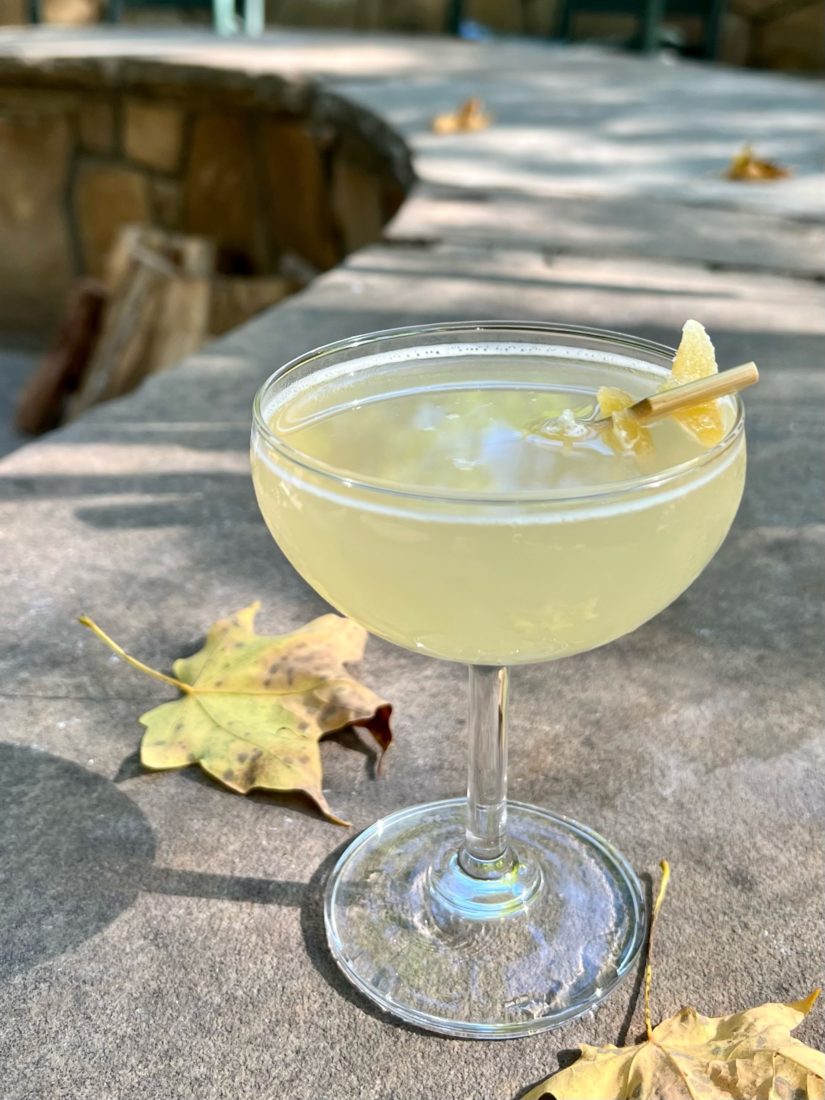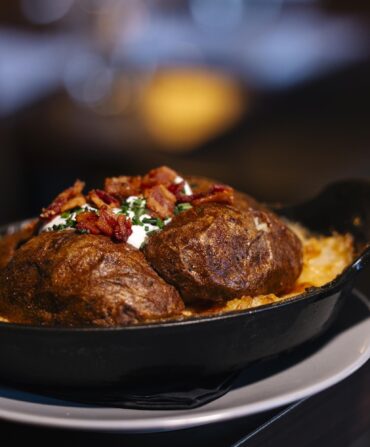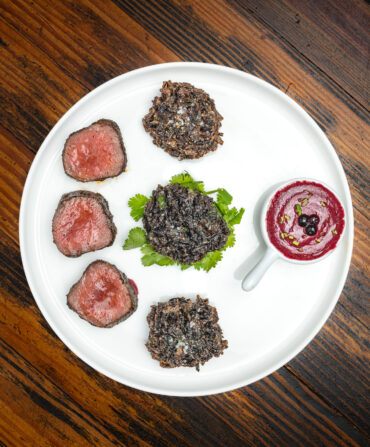At the RT Lodge in Maryville, Tennessee, the Stinging Bee’s Knees cocktail makes for a refreshing sipper—with a bite. The ingredient that gives that zing: fermented honey. “The honey flavor is there,” explains Randi Savage, RT Lodge’s bar manager, “but there’s a tanginess, a fizziness, an acidity, a different level of flavor that you don’t get from just a jar of honey.”
The hotel’s pastry team concocts the fermented version by combining honey, water, herbs, and fruit—specifically, peaches, skin and all. The notes of the honey and the fruit shine through, Savage says, and the peach and thyme’s flavors play subtly in the background. Using the peach skin gave the honey depth. “A little bit of tannin,” she says.
While the pastry team uses the fermented honey for desserts, such as a peaches and cream semifreddo, Savage knew it would be a perfect addition to a classic tipple. A Bee’s Knees cocktail typically gets made with gin, lemon, and regular honey or a honey simple syrup. Here, Savage swapped out that last element for the fermented honey (and a little bit of muddled ginger). “So that’s the stinging,” Savage says. “That’s the kick.”
At Cultured South, a fermentation company in Atlanta, founder Melanie Wade Styles likes to make a garlic-infused fermented honey. The garlic doesn’t come across as pungent as one might think. “It has an umami flavor,” Wade Styles explains. “It’s a little sweet, and a little briny because of the fermentation.” This combination is also believed to pack a health punch—Wade Styles likes to pop a clove of fermented honey garlic in her mouth if she feels a cold coming on.
Fermented honey makes an excellent culinary companion beyond cocktails, too. Wade Styles likes to use it when preparing baked salmon. “I put just a few pieces of the garlic on top of the salmon,” she says. She then drizzles it with a little bit of the honey and bakes it in the oven at 350 degrees for about 25 to 30 minutes. Then she adds a little bit more honey on top when it’s done baking. The garlic gets mushy and imbues its flavor into the salmon. Wade Styles also employs the honey in a vinaigrette with balsamic vinegar and extra virgin olive oil (you can throw a couple of the cloves in the salad, too).
Making fermented honey is a fairly simple process. At RT Lodge, they combine equal parts local honey and water (you can use less water for a thicker liquid) which can easily be done in a jar with a tight-fitting lid. Add in herbs of your choice and let the jar sit at room temperature for a couple of weeks.
To make the garlic version, Wade Styles also likes to use local, unpasteurized honey and garlic cloves. Combine them in a jar and put a cheese cloth over the mouth to let it breath (but a lid is fine if that’s all you have). Place the jar in a cool, dark place and stir the mixture every few days. The garlic will shrink, both the garlic and honey will take on a darker color, and the honey will become runny.
The possibilities of fermented honey are seemingly endless—it’s all a matter of experimentation and taste. At RT Lodge, they’re playing around with a batch using chili peppers so they can have a spicier blend for fall, and tinkering with including apples and pears is on the docket. “I think that mango would be great next spring and summer,” Savage says. “That sounds really fun.”








